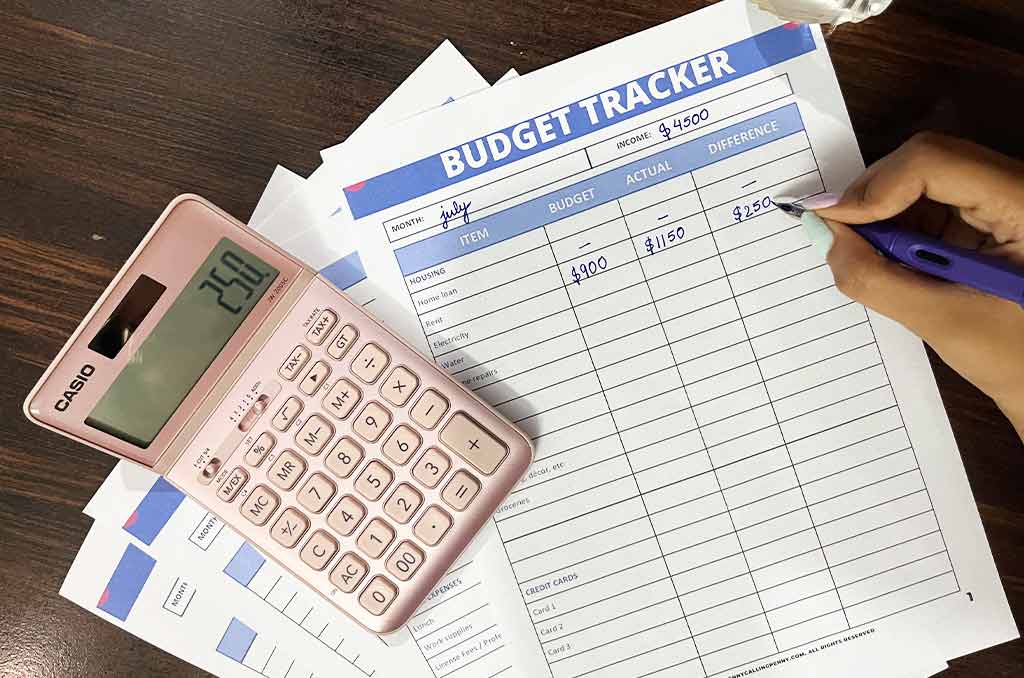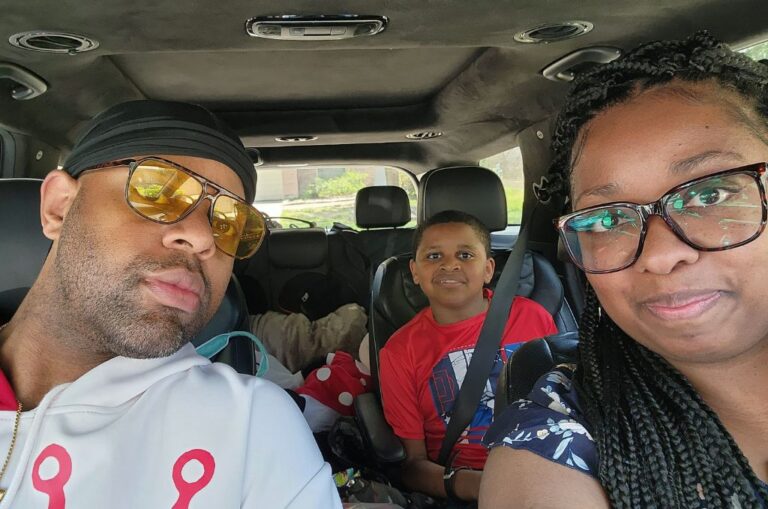Are you searching for ways to save money? Inflation is skyrocketing, making it a challenge to save money. If there is a time you need to save more money, it is now! But how do you save when consumer prices are soaring and everything is expensive? But what happens if you don’t save money? Debt is imminent, which can shatter your financial goals. Whether you’re wondering where to put your money, how much you should save every month, or want to stop living paycheck to paycheck, you’ve come to the right place.
In this article, you’ll learn how to save your hard-earned money and live a happy life—saving money can uplift your moods! People with at least $400 in emergency funds are happier than those who don’t have any savings. Do you think you can’t afford to save right now? After reading this article, you’ll be surprised that there are many ways to save money.
How Much Should I Be Saving Every Month?
The amount of money to save every month depends on your income and budget. One effective way to determine the cash to save in a month is the 50-30-20 rule. This is a budgeting thumb rule where 50% of your net income goes towards paying for your absolute necessities—-the things you need to survive. Take 30% of the remaining net income and use it for wants; the last 20% is the amount to save, invest, or use to pay the debt. So, if you follow this budgeting rule, it means you should be saving 20% of your income every month.
Don’t panic if this monthly budgeting rule doesn’t seem to work for you—it’s just a blueprint. You can create your budget using other strategies and achieve your saving goals. Now, onto where you should put your money.
Where Should I Put My Money?
In a perfect world, you would stash your money somewhere for future use without losing its purchasing power. It is the complete opposite in real life! Keeping money in your current account can cost you big time; yikes, inflation. You need to create a savings and investment strategy so your money can increase threefold. Well, a 100% ROI may be nearly impossible with the below options, but at least you can cushion your money against unforgiving inflation.
So, where should you put your savings? Focus on safety and maximum interest earnings when looking for the best place to put your cash right now. There are many options, but the best place to put your savings right now includes the following;
High Yield Savings Account
As the name suggests, a high-yield savings account gives you more interest rates than a typical savings account—-ideally, you can recoup 20-25 times the average savings rate. You can create this account with online banks or credit unions. Capital One, for instance, offers one of the best high-yield savings accounts. It has an annual yield of 2.35%, higher than the national average for a traditional savings account. The current average savings rate stands at 0.21%, according to FDIC (Federal Deposit Insurance corporation).
Online high-yield savings accounts like the one offered by Capital One provide many benefits, including zero fees and balance minimums. You can create multiple accounts and access your savings online. Furthermore, you can automate your savings and enjoy simple account transfers. Importantly, your money is FDIC-insured!
Certificates of Deposit
Another excellent place to put your money is the Certificates of Deposits account, also known as a CD. With this savings account, you can fix your money or a specific period, say three months, six months, one year, or even five years. And your money attracts profitable interest rates compared to traditional savings accounts. Once these funds mature, you can access the principal plus the accrued interest rates. If you fix your money for longer terms, like 60 months, it attracts a higher APY.
You can buy your CD through your FDIC-insured bank or a brokerage firm. The most vital thing is to do your due diligence—understand the fine print, including penalties, because CDs have some risk levels.
A one-year CD can attract 3.25% APY based on the Capital One offers. If you fix a CD account for two years, you can enjoy a 3.30% APY, while a five-year CD account can offer a 3.50% APY. Again, this is a low-risk savings account, requiring no balance minimums. Capital One’s 360 CDs account is FDIC-insured, offering nearly zero risks to your money. It is easy to create a CD account and can take less than five minutes.
16 Ways To Save Money and Live A Happy Life
Once you understand where to put your money, it is time to stack up your savings as much as possible. You know you need to save but don’t know where to start, and that’s where this guide comes in! There are many ways to manage your funds and create a saving culture to help you make a nest egg, and below are ways to save cash and live a happy life.
1. Use The Right Budgeting Formulae
Do you feel your money slips through the cracks once it hits your account? Budgeting is the most important step to saving money. Balance your books and create a strategy for your income and expenses. As mentioned above, the 50-30-20 budget rule is a popular and straightforward strategy to account for your earnings. It ensures you set aside at least 20% of your net earnings. If you earn $4k, for instance, you can expect to set aside $800 as your savings every month. Do that religiously for 12 months, and you’ll have a minimum of $9,600 as savings in a year—assuming your net income remains constant. Remember, there might be some nitty-gritty details to consider when using the 50-30-20 budget rule, like your employer’s contribution to your 401(k) savings account.

Don’t you like doing the math every other time your check comes in? You can upgrade to a budgeting app. Pocket Guard is an excellent budgeting app to keep track of your money. It automates your budget, keeps track of your spending categories, and lets you know what you spend more money on. This budgeting app features excellent visuals, custom categories, hashtags, and reports to help you analyze your expenses and savings. Download the app from App or Play Store and start budgeting on the go.
2. Pull The Right Card
The card you use to purchase can make or break your saving goals. There are many options for credit cards, and it is your chance to save money on purchases. Get a credit card that rewards you once you complete a transaction. Whether you’re a globe trotter, student, or an avid shopper, there is a card to fit your unique needs and offer rewards. You can earn points, travel miles, or get money back with the right card.
Opt for a card that offers the best rates and minimum fees. What credit card should you use for a bad credit rating? Don’t worry if you don’t know how to choose the best credit card. Here is a comprehensive list of credit cards to consider. Tailor-make your credit card to fit your unique situation. For instance, get a travel credit card for all your travel needs. A credit card that earns you rewards can make a difference in your savings account.
3. Pay With Cashback Cards
Another way to save money is using cashback credit cards, which give you money back depending on your reward category and the credit card program. Cashback cards are straightforward to earn cash back. These cashback cards come in flat-rate, rotating, and tiered categories.
With a flat-rate card, you get cashback on any purchase you make without meeting any requirements. If it is a 2% cashback flat-rate card, you can expect to recoup the money you spend at that rate on any purchase. Tiered cashback cards offer higher reward rates, but you need to fulfill certain conditions—i.e., track the shopping categories qualifying in each quarter of the year. Discover It® is one of the best cashback cards for rotating rewards programs, and it offers 5% money back —the highest rate in the market— on the rotating categories.
4. Stuff the Envelopes
Have you ever heard about envelope budgeting? This budgeting system is another excellent way to save money and live a happy life. So how does the envelope system work? You take a budgeting envelope and allocate spending categories. Once you’ve labeled each type, you can divide your take-home pay according to your expenses.
The best thing about this saving strategy is that it eliminates the craving to spend more money. If you set money aside for eat-out and exhaust it, you can only spend money in the next month when you get your paycheck. Stuff your envelopes and say goodbye to overdraft fees and impulse buying. This makes it easier to cut back on spending and save money effortlessly. You can consider digital systems if you prefer something other than cash-based physical envelopes. Get the Good Budgeting app and enjoy an online envelope budgeting system; it is available on the web, Android, and Apple.
5. Automate Your Savings
Are you finding it challenging to stash away some money every time you get paid? Setting money aside can be pretty challenging, making it hard for you to create a nest egg. And this is where the savings automation comes in. You’re probably enjoying one of the saving automation through your employer-sponsored 401(k) if you’re employed. However, you can replicate the same thing out of your workplace, automate your savings, and create a strong saving culture.
One benefit of automating savings is that it can help you prioritize your saving and investment goals. With this type of saving, you set automatic deductions so that a certain amount goes to the savings or investment kitty as soon as the money hits your account.
We highly recommend the Chime Savings Account for automatic savings. It is free to open an account, no balance minimums to earn interest and automation features. You can automatically save the change you remain with after shopping or a percentage of your paycheck. Chime is FDIC-insured, so you don’t have to worry about your money.
6. Refinance Your Mortgage
Does your mortgage take a big chunk of your take-home pay? Mortgage refinancing can help you save money now and in the long overhaul. Let’s cut to the chase, a mortgage can be overwhelming sometimes, and all you need is a pause. Mortgage refinancing can make financial sense if you aim for a lower rate, faster payoff, lower monthly payments, or increased equity.
Shop the best mortgage rates before committing yourself to a new loan. Taking a mortgage to refinance can help you free up some money in your monthly budget, especially when you’re cash-strapped.
7. Save Your Tax Refunds
Did you know you can save a part or all of your tax refund money? That’s right! You can use your refunds to buy Series I Savings Bonds. These are federally-backed saving programs that can help you counteract inflation. Technically, your money attracts a fixed interest rate and a rate that adjusts with inflation, and they go at face value. It is the most secure saving strategy, and you don’t need a bank account to buy them. Start saving with as low as $50!
8. Set a Spending Limit
You need to set a limit now if you find yourself splurging money on unnecessary things. The worst part is the guilt and regrets feeling you go through after overspending your hard-earned money. You don’t have to go through that awful situation every other payday. Set spending limits on your credit and debit cards and take charge of your spending habit. Check with your provider if they offer an option to limit your spending. Data shows that people are more likely to overspend on a credit card than cash—you’re likely to spend 83% more using a credit card.

You can set a cap for the amount you can spend in a day. For instance, you can set limits for online transactions, withdrawals, point-of-sale transactions, and contactless transactions with Citi Bank. One advantage is that you can control impulse purchases when you place daily limits. Furthermore, you can avoid overdrafts and non-sufficient fund fees.
Another no-brainer way to set spending limits is to use the 1% rule. This spending rule is straightforward and works well if you earn less than $200k. Do you want to buy something that costs more than 1% of your annual income? You need to abort the mission for a day and rethink your purchase. Delaying your purchase gives you time to consider if you need that product or service.
9. Automate Your Bills
How many bill items do you have to pay per month? Keeping track of monthly bills can be exhausting, and more often than, you can remember some, which can attract penalty fees. Putting your bills on auto-pay is another excellent way to save money. Automatic payments ensure you settle your bills on time. And this means you won’t have to worry about late and overdraft fees. Plus, automating your bills can improve your credit score— paying bills on time consistently can create a positive impression on your credit reports.
10. Capitalize on Store Brands
What brand do you pick at the store? Many people go for the popular name brands, which are likely more expensive. However, did you know that you can save up to 25% on shopping costs by purchasing store brands instead of name brands? We get it; you’re probably thinking about quality, which is a top priority when buying something. Well, store brands are better than you imagine. A study showed that store brands are just as quality as big-name brands. It’s just that you’ll save big bucks with the former.
11. Clear Your Credit Cards in Full
Saving money while having a debt to service can be quite a hassle. You might have heard many money experts advocate for building an emergency fund at all costs. While it is an excellent idea to have something saved up for rainy days, it can take a lot of work to achieve that when you have debt. First, the interest rates keep going, and you’ll have to pay it regardless. Second, having credit card debt increases your credit utilization ratio, which is not good for your credit reports. Focus on paying off credit card debt first, improve your credit score and have peace of mind when building your emergency fund.
There are many ways to conquer your credit card debts, and these include;
- Avalanche Method
This method of paying credit card debt first focuses on the loan with the highest interest rate. The Avalanche method reduces the amount of interest you pay in the long overhaul and can help you clear debt in the shortest time possible as long as you’re consistent with payments.
- Snowball Method
The snowball debt payment method is the complete opposite of the avalanche method. With this strategy, you focus on paying the smallest loans first. The advantage of this method is the psychological reward it offers, making you want to pay all your debts. Paying a small loan is achievable, and it gives you instant gratification.
- Debt Consolidation
Debt consolidation is another option for conquering credit card debt. You take another loan to pay off all others and merge them into a single debt. You can combine your debt through a personal loan or credit card. One benefit of this method is that you will only have to deal with one loan. Additionally, it can lower the interest rate and improve your credit score. Importantly, you can pay off your credit card debts faster.
- Balance Transfer Credit Card
Are you grappling with various credit card debts? Transfer all the debt into a new single account and work on it. Ideally, this strategy involves capitalizing on many credit card companies 0% intro offer. With this offer, you can settle down all your credit card debt interest-free.
12. Shop The Pantry and Cook More at Home
Only go shopping at the grocery store after exhausting what is in your kitchen. Ordering a take-out or buying more ingredients for a new recipe can sound easy. However, that can translate to food and money wastage. Be creative and exhaust whatever you have in your pantry before shopping, eating out, or ordering a take-out.

13. Watch Your Subscriptions
Do you have subscriptions that you pay for every month? Chances are, you’re either overpaying for subscriptions or don’t need some of them. You can save money with your subscriptions by tracking them monthly. Do a subscription overhaul and eliminate the ones you don’t need. You can downgrade, cost share with friends or family, search for less costly alternatives, or consider subscription offers.
14. Maximize Your Retirement Plan Matches
Do you have a retirement plan like a simple IRA or 401(k)? Don’t leave money on the table! Capitalize on your plan matches offered by your employer. So what is a retirement plan match? Your employer can contribute to your retirement plan up to a certain level. For instance, your employer can offer a 50% match and up to 5% of your annual pay. Stack up more savings by capitalizing on your company matches.
15. Ace the Couponing Game
Why pay the total price when you can get a discounted price? Enter coupons, a popular and simplest way to shop for items at a discounted price. Save the difference from your shopping money—you can cut costs on shopping by 50%, a great deal for an avid saver. The best places to look for coupons are Rakuten, Ibotta, and Swagbucks. Furthermore, these sites have apps you can download on Play or Appstore. You can also install a browser extension and automatically search for coupons when shopping online.
16. Turn Clutter Into Cash
Have you got clutter in the garage? Turn them into cash and create room in your garage. If you have items in excellent condition, you can sell them online, buy back sites, on eBay, or by hosting a yard sale. The best part is that selling preowned stuff can help you save money and create space in your home.
How Do I Save Money and Live My Life?
There are a dozen ways to save money and live a happy life. First, identify strategies that work for you and focus on keeping as much as possible. Remember, you need to make money to save it; you can’t save what you don’t have.
Do the above ways to save money sound interesting? Join our email list and get actionable tips sent straight to your inbox!









